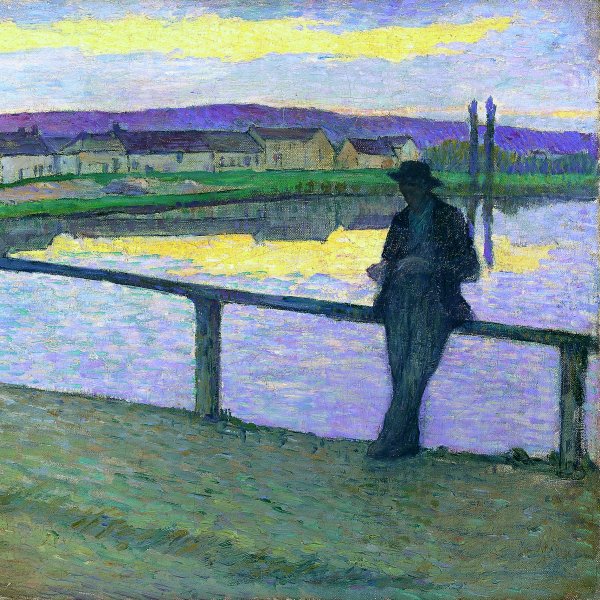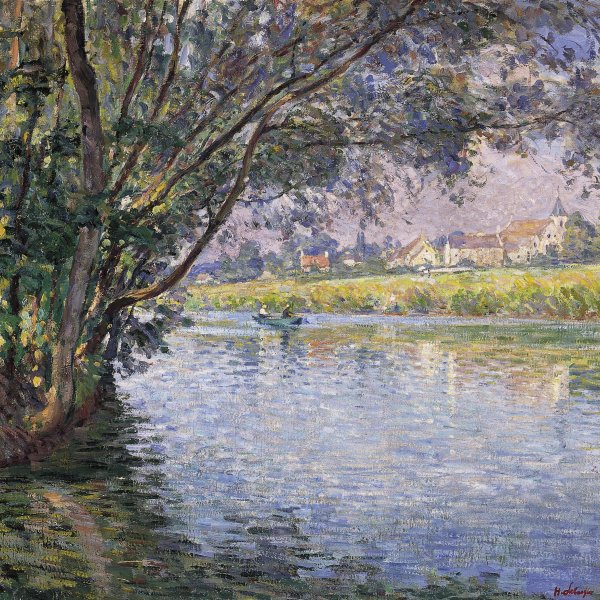Henri Lebasque
Champigné, 1865-Le Cannet, 1937
Lebasque was born on 25 September 1865 in Champigné (Maine-et-Loire) into a commercial family who owned a wood business. He began his art training in the city of Angers, where he entered the École des Beaux-Arts. In 1885 he decided to continue his studies in Paris in Bonnat's studio. In 1890 he took part in the Salon des Indépendants and met Maximilien Luce and Paul Signac, with whom he maintained a close friendship. During these years Lebasque experimented with neo-Impressionist techniques, which he abandoned some years later in favour of a more natural brush-stroke.
At the beginning of the 20th century he settled for five years in Lagny, where he painted landscapes. In 1906 Lebasque's work underwent a marked transformation in the way in which he applied colour to his canvases and interpreted light. This change was motivated by his visit to the South of France with his friend Manguin and by the effect that the southern light had on him. Over the next few years he worked in Normandy (Andelys in 1912, 1915 and 1921), Brittany and Vendée, and also in Saint Tropez, Saint Maxime, Nice and Cannet, where he settled around 1924. During these years the subjects of his paintings were the objects and people around him: portraits of his wife and children, interiors and gardens, river banks as well as views of the Provence, and of the Côte d'Azur, orchards and olive groves.
For health reasons (he had suffered from rheumatism since his youth) Lebasque retired to the coast at the end of his life. During this last period he painted female nudes, the figures filled with light and tenderness. Lebasque died in Le Cannet of a heart attack in August 1937.
Mar Borobia
At the beginning of the 20th century he settled for five years in Lagny, where he painted landscapes. In 1906 Lebasque's work underwent a marked transformation in the way in which he applied colour to his canvases and interpreted light. This change was motivated by his visit to the South of France with his friend Manguin and by the effect that the southern light had on him. Over the next few years he worked in Normandy (Andelys in 1912, 1915 and 1921), Brittany and Vendée, and also in Saint Tropez, Saint Maxime, Nice and Cannet, where he settled around 1924. During these years the subjects of his paintings were the objects and people around him: portraits of his wife and children, interiors and gardens, river banks as well as views of the Provence, and of the Côte d'Azur, orchards and olive groves.
For health reasons (he had suffered from rheumatism since his youth) Lebasque retired to the coast at the end of his life. During this last period he painted female nudes, the figures filled with light and tenderness. Lebasque died in Le Cannet of a heart attack in August 1937.
Mar Borobia





